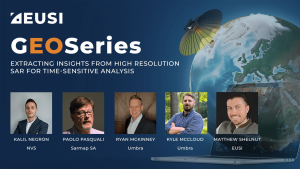QuickBird De-Orbited
- European Space Imaging
European Space Imaging announced today that on Tuesday 27 January 2015, after 13 years of excellent performance, QuickBird approached its end of mission smoothly and, according to the National Oceanic and Atmospheric Administration (NOAA) “re-entered the earths’ atmosphere at 01:59 UTC”.
DigitalGlobe confirms: “QuickBird de-orbited successfully. QuickBird was on orbit for more than 13 years, far exceeding its designed mission life. The satellite made over 70,000 trips around the Earth, contributing substantially to DigitalGlobe’s unmatched imagery catalog, and thus our understanding of our changing planet. Many thanks to our customers and partners for their support of a very successful mission. Imagery from QuickBird — as well as the rest of the DigitalGlobe constellation — can be still purchased from our imagery catalog.”
European Space Imaging will continue providing QuickBird imagery from their archive as well as taking new collection orders from the sibling satellites in the DigitalGlobe constellation.
Related Stories

GEOSeries: Extracting Insights From High Resolution SAR Imagery for Time-Sensitive Analysis
In this webinar, industry experts and advanced users of Umbra SAR data showcase how they transform SAR imagery into actionable insights in real-world mapping, monitoring and intelligence applications. See how NV5 and Umbra leverage ENVI SAR Essentials for advanced processing with time-efficient results, converting analytics into valuable intelligence.

Using Satellite Imagery to Build Water Resilience Across Europe
Water across Europe is facing severe pressure. Climate change, urbanisation, agricultural demands and other sources of pollution are threatening water security and creating critical challenges that need to be addressed. We have to act quickly, build stronger systems and create sustainable water resilience practices – so that both natural ecosystems and human communities can thrive. Here is how satellite imagery from EUSI can help.

EUSI and Albedo Partner to Deliver 10 cm Resolution Satellite Imagery to Europe
It is our pleasure to announce the partnership with Albedo, a builder of high-performance spacecraft and the first satellite designed to operate commercially in VLEO (Very Low Earth Orbit). This partnership will bring the world’s highest resolution satellite imagery to the European and North African market.

Updating the Land Parcel Identification Systems in 2025: The Benefits of Using Satellite Images
Agricultural paying agencies across Europe face increasing challenges in maintaining accurate and up-to-date Land Parcel Identification Systems (LPIS), ensuring compliance with the Common Agricultural Policy (CAP) and supporting sustainable agricultural practices.





